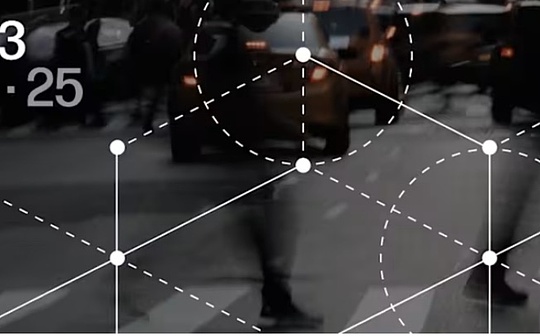
Author: blockpunk Source: X, @blockpunk2077
BTC staking may be an important narrative in the second half of the year and an important opportunity to open up the BTC ecological landscape.
The narrative of BTC asset launch has come to an end. Memecoin can always be played, but it is not the final form of the BTC ecosystem. The narrative of BTC asset revenue will soon become mainstream in the future.
Represented by Babylon, it provides economical security guarantees for other Pos chains by pledging BTC and obtains profits through pledge. This has opened up the track of BTC staking and will completely change the gameplay of the BTC ecosystem. Everyone has gone from playing BTC principal toPlay BTC interest.
BTC staking is driven by two important narratives, first of all, just like ETH’s DeFi, first of all, to increase the yield on the overall asset.
According to DefiLlama, the current market size of BTC interest-generating market exceeds US$10 billion, with a yield of between 0.01% and 1.25%, which generally need to be entrusted to third-party CeFi institutions.The staking rewards of PoS blockchain often range from 5% to 20%. The staking BTC will not be too low for other PoS chains. BTC Staking can obtain 50 times the income from traditional BTC revenue.It will be a huge growth point.
The second point is the fiery background of BTC L2, filling the narrative lack of L2’s connection with BTC.There are nearly 80 BTC L2s on the market. If the BTC main network block is completely filled by DA, it can carry at most twenty L2s. Many L2s have fallen behind and turn the frequency of uploading BTC data intoOnce in a few months.How do these assets use centralized custody bridges, security is not guaranteed by BTC, and BTC L2 built using EVM convince the community to be related to the BTC ecosystem?There is a huge narrative gap here.
Obviously, being able to be a validator network for Babylon or BounceBit brings great legitimacy to BTC L2s. At the same time, being able to earn the overflow of Staking BTC as soon as possible through PoS, obviously, it can better benefit the tokens and ecology.
Of course, ETH’s resting project Eigenlayer faces different market conditions. Most BTC holders are passive holders, and 67% of BTC holders have not moved for more than a year, so they want to convince BTC holdersIt is difficult to participate in pledge.
At the same time, BTC staking does not have native currency principal interest, and the interest is often L2’s own tokens, which poses certain risks.Of course, some L2 that use BTC as gas fee also try to allocate the BTC received from the handling fee to staking users, but obviously this is enough to support it.
To put it bluntly, the meaning of BTC L2 is to attract (happy) BTC deposits, and BTC staking is a more efficient way.
In addition to staking, thinking about the performance of BTC, building L3 based on existing mature L2 stake is not a pseudo-demand, but a must.Projects like Nubit that can make L2 into a UTXO Stack framework that can be nested by DA or CBK can gain greater advantages in technical selection.
Babylon chain
Babylon provides POS security guarantees for other blockchains through native staking of BTC layer in a cryptographic way.
Babylon’s staking is a staking chain. The pledged Bitcoin is retained in scripts on the Bitcoin network. The stakinger can specify the selected verifier and earn verifier income on the corresponding POS chain.
At the technical implementation level, the Babylon staking process runs completely in a cryptographic manner with “extractable one-time signature EOTS” and does not rely on any third-party bridges and custodians.Babylon also functionally designed a complete BTC staking that includes confiscations. If the staker (also the verifier of this POS chain) remains honest and only signs one valid block at a time, it will receive a validator reward for the POS chain;It tries to do evil and signs two blocks at the same block height at the same time. Then its EOTS private key will be pushed out. Anyone can use this private key to transfer the pledged BTC on the BTC chain to achieve a penalty..
Babylon is currently staking the test network, and will launch the next sBTC test in May, and will start pre-deposits in the second half of the year. The tokens may be issued at the end of the year.Babylon revealed in space that it will also issue liquid assets pledged by BTC (similar to stETH). The subsequent resting, lrt and lst projects currently have @ChakraChain @LorenzoProtocol @yalaorg @SataBTC
ChakraChain
Chakra is BTC’s staking & resting protocol. BTC deposited by users will be invested in BTC staking protocols such as Babylon to obtain multiple benefits.At the same time, Chakra provides verification services maintained by Staker to provide security guarantees for BTC L2.
Chakra aggregates the signatures of some users through the MuSig2 protocol to generate a UTXO containing a time lock, which can “stake” Bitcoin within a certain period of time and complete the pledge action.Bitcoin holders do not need to transfer BTC to any third-party custodial address, but implement self-custodial of L1 layer through a derivative address.
There are only two unlocking conditions for staking BTC UTXO: one is that the Chakra network and the user will be re-signed. This may be that the user initiated an early unlock request in the Chakra network, which provides flexibility; the second is arrival.After the initial lock-up period, the user will automatically gain control of these BTCs, and even after the Chakra network is stopped, the user can still extract the BTC on time.
Unlike Babylon, which also uses self-hosted BTC staked, Chakra Network does not have the ability to confiscate users’ staked BTC, but instead guarantees consensus by reducing consensus rewards, which further avoids some possible false confiscations that threaten users’ BTC assets.
Chakra also introduced ZK’s capabilities into the BTC staking ecosystem and received investments from Starkware, ABCDE, Bixin, and Coin Summer.The test network is currently underway, you can connect to the wallet to receive early participant certificates.
build_on_bob
BOB is a BTC EVM sidechain architecture implemented using OP hyperchain SDK. It uses packaged BTC on ETH such as wBTC, tBTC as gas fees. In the future, BTC security will be introduced through a brand new POW merger mining protocol.
The BOB test network has been in operation for several months and has a certain ecosystem. The main network will be launched on May 1st. The first phase of deposit activities is currently underway. The Spice points accumulated in deposits correspond to the future $BOB generationCoins will be TGE directly after the main network is started.
Participating in the pre-staking of BOB requires operation on the ETH main network. If it is BTC, it needs to cross-chain $tBTC and $wBTC, with a return rate of 1.5 times. It also accepts DAI, eDLLR, rETH, USDC, USDT, wstETH, STONE, and pledgeThe reward multiple is 1.3 times and the staked by ALEX, ETH, and eSOV are 1 times.
BOB has strong resources and cooperated with $MARA, the largest listed mining company in the US stock market, to launch BTC L2, and has just announced a US$10 million investment in Coinbase, which can be regarded as a project benchmarking Binance and bouncebit. Currently, BOB’s first phaseDeposit TVL is currently around US$250 million and has great potential.
BotanixLabs
Botanix Labs builds the EVM equivalent L2 on Bitcoin, which is run by POS, and users can deposit BTC into multi-signature addresses to participate in L2 staking, or bridge BTC to L2 participation in the ecosystem.Its characteristic is that these BTC assets are protected by a decentralized multi-signal network Spiderchain.
You can become a validator node by pledging BTC to participate in PoS and Spiderchain on the multi-signature network. Botanix uses the hash value of Bitcoin blocks as the source, and randomly selects nodes to participate in PoS block generation. The block header after an implementation will be engraved into the BTC block.Final confirmation is completed.
The settlement layer of Botanix L2 is BTC, and its gas is also BTC from the collapsed chain. The consensus also uses the security of BTC as a guarantee.
L2’s assets on BTC are all protected by the multi-signature network Spiderchain, and nodes also randomly form multiple signature groups to control the BTC in the multi-signature address.The cost of doing evil for a node is higher because the pledged BTC can be confiscated.
Botanix’s test network has been running for half a year, https://botanixlabs.xyz/en/testnet, and users can participate in the test and receive a series of NFT credentials.Botanix Labs has been building L2 on BTC since 2022, with a certain technical strength, and its test network is a good opportunity to participate.
BounceBit
BounceBit is a BTC-based livelihood and resting infrastructure.BounceBit attempts to integrate CeFi and DeFi services in BTC income generation, and uses BTC staking to guarantee the security of the blockchain.
BounceBit itself is also a BTC EVM L2. In addition to pledging its native token BB, it can also pledge BTC assets.
At the same time, BounceBit’s BTC assets (including BTCB and WBTC on the mainnet BTC and BNBChain) are all hosted in centralized custodial services supported by Mainnet Digital and Ceffu, which is the only Binance uses institutional custodial services.BounceBit attempts to eliminate security concerns among BTC users through this layer of endorsement.
The BTC assets deposited by users have become bounceBTC on BounceBit, and users can choose to pledge these BTC to other validator networks, such as EVM chains, decentralized bridges and oracles, to earn verification benefits from these networks.
BounceBit brings triple benefits to users through a series of businesses. The main network BTC assets are entrusted to Binance and other cefi to obtain stable returns. Users can also stake on this chain to earn bb tokens, or restaking to other verifications.Those who earn rewards online or use them for DeFi services such as AMM and lending.BounceBit, supported by Binance, will provide 8% of the tokens to Binance Megadrop’s BNB stakers.
MezoNetwork
Mezo is a BTC L2 built on tBTC. It uses the Cosmos EVM architecture to realize asset transfer from BTC to Mzeo L2 through tBTC’s multi-signal cross-chain bridge.
Mezo features the introduction of Ponteau economics known as HODL Proof, similar to BTC staking ve33.Users can lock BTC on Mezo to participate in consensus. The longer the lock time, the more the staking verification weight you get increases exponentially and the higher the reward.
Mezo’s PoS is divided into two parts. The BTC part and the native token MEZO part can both receive veMEZO as a reward. The incentive points are divided into different incentive pools. 1/3 of the total incentive is obtained by the BTC staker and 2/3 by the MEZO staker.get.
On April 9, Bitcoin Layer 2 network Mezo completed a US$21 million Series A financing, led by Pantera Capital, and participated by Multicoin, Hack VC, Draper Associates and others.
Mezo has started early deposit activities and can now deposit and access native BTC, wBTC and tBTC. The Mezo main network is expected to be launched in the second half of 2024.
LorenzoProtocol
The liquidity staking protocol for Bitcoin built on Babylon provides a rapid deployment service for L2-as-a-service.Lorenzo attempts to lower the threshold for participation in BTC staking projects such as Babylon, reduce the risk of fines and confiscation for stakers, and release the liquidity of staked BTC assets.
Babylon is a relatively low-level BTC staking protocol, which is similar to the native staking of ETH and may have certain requirements for the minimum staking BTC.
At the same time, for a single user, the pledge income is not stable, but it is also a risk of being confiscated.Therefore, it is necessary to participate in the liquid staking agreement of BTC Staking in a unit of risk and return through rewards BTC staking pools. This is what the Lorenzo protocol needs to do, which is similar to Lido.
The stakeholder can wish to participate in the pledged PoS chain and deposit its Bitcoin into the corresponding Lorenzo entrusted vault, which is a Bitcoin multi-sign address.
Stakers can obtain equal amounts of stBTC on Lorenzo’s own chain as a proof of liquidity for participating in Babylon’s staking Bitcoin and use it to receive the pledge income.
The Lorenzo chain itself is securely protected by Babylon Bitcoin, and is EVM-compatible Bitcoin L2. It will also use a modular way to help more BTC L2 deployments in the future. The Lorenzo chain serves as the direct interoperability chain of these L2 chains.








